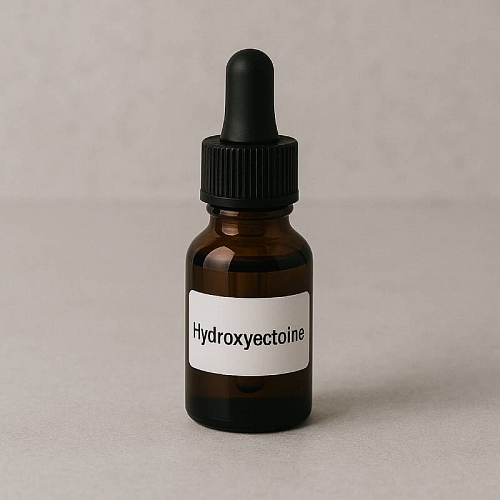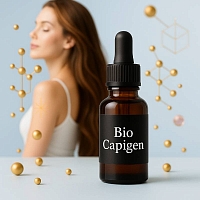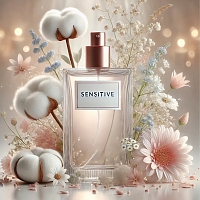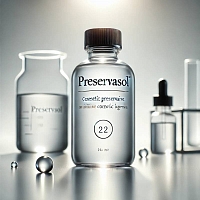-
 Absolutes
Absolutes
-
 Active Complexes
Active Complexes
-
 Actives and Peptides for Cosmetics
Actives and Peptides for Cosmetics
-
 Amino Acids
Amino Acids
-
 Food Flavorings
Food Flavorings
-
 Ayurveda
Ayurveda
-
 Vitamins
Vitamins
-
 Gelling Agents and Thickeners
Gelling Agents and Thickeners
-
 Hydrosols and Floral Waters
Hydrosols and Floral Waters
-
 Hydrolyzed Proteins
Hydrolyzed Proteins
-
 Fragrant and aromatic substances
Fragrant and aromatic substances
-
 Acids, Salts, Alcohols, and Alkalis
Acids, Salts, Alcohols, and Alkalis
-
 Preservatives and Antioxidants
Preservatives and Antioxidants
-
 Cosmetic Raw Materials
Cosmetic Raw Materials
-
 Dyes, Pearlescents, and Glitters
Dyes, Pearlescents, and Glitters
-
 Face Masks, Scrubs, and Dried Flowers
Face Masks, Scrubs, and Dried Flowers
-
 Oils, batters, macerates, oil mixtures
Oils, batters, macerates, oil mixtures
-
 Candle Supplies
Candle Supplies
-
 Melt and Pour Soap Bases
Melt and Pour Soap Bases
-
 Base for cosmetics, cream, serum, shampoo
Base for cosmetics, cream, serum, shampoo
-
 Fragrance Oils
Fragrance Oils
-
 Surfactants
Surfactants
-
 Peelings for Skin
Peelings for Skin
-
 Herbal Powders and Plant
Herbal Powders and Plant
-
 Silicones and Conditioning Surfactants for Hair
Silicones and Conditioning Surfactants for Hair
-
 Raw materials for dietary supplements
Raw materials for dietary supplements
-
 Packaging for Cosmetics and Perfumes
Packaging for Cosmetics and Perfumes
-
 Molds, Packaging, Tools
Molds, Packaging, Tools
-
 Organic Extracts
Organic Extracts
-
 Emollients for Cosmetics
Emollients for Cosmetics
-
 Emulsifiers
Emulsifiers
-
 Essential Oils
Essential Oils
Hydroxyectoin: Your Advanced Shield for Youthful and Protected Skin
Unleash the next generation of skincare with Hydroxyectoin, a cutting-edge, water-soluble active ingredient meticulously produced in Japan. This remarkable compound is a powerful cell protector, designed to defend your skin from environmental stressors while delivering exceptional anti-aging and hydrating benefits. With a versatile pH range of 1-9 and a low recommended dosage of 0.3-2%, Hydroxyectoin is an indispensable addition to high-performance skincare formulations aimed at preserving youthful radiance and enhancing skin resilience.
Description and Key Features
Hydroxyectoin (INCI: Hydroxyectoin) is a naturally occurring extremolyte, a molecule produced by microorganisms to survive extreme environmental conditions like intense heat, cold, drought, and high salinity. This unique origin imbues Hydroxyectoin with extraordinary protective and restorative properties that translate beautifully to human skin. Its structure allows it to form a protective shield around cells, enzymes, and proteins, stabilizing them and preventing damage.
Key features and benefits:
- Exceptional Cell Protection: Hydroxyectoin creates a "water shell" around skin cells, effectively protecting them from various environmental aggressors, including UV radiation, pollution, heat, and cold. It acts as a powerful shield against oxidative stress.
- Superior Hydration: It's an outstanding humectant, capable of binding large amounts of water to the skin, providing deep, long-lasting hydration and preventing transepidermal water loss (TEWL). This results in plumper, more supple skin.
- Potent Anti-Aging Effects: By protecting cellular structures and promoting skin barrier integrity, Hydroxyectoin helps to reduce the appearance of fine lines and wrinkles. It supports skin elasticity and firmness, contributing to a more youthful complexion.
- Anti-Inflammatory Action: It helps to calm irritated skin and reduce redness, making it suitable for sensitive or compromised skin conditions.
- Pigmentation Control: Hydroxyectoin can help prevent and reduce hyperpigmentation by protecting skin cells from UV-induced damage that triggers melanin production.
- Water-Soluble: Its excellent water solubility ensures easy incorporation into a wide array of aqueous cosmetic formulations without requiring complex solubilizers.
- Effective at Low Doses: With a recommended dosage of just 0.3-2%, Hydroxyectoin is a highly efficient and cost-effective active ingredient.
- Wide pH Stability: Stable across a broad pH range of 1-9, it offers significant flexibility in formulation development, allowing its use in diverse product types.
Versatile Applications and Usage Areas in Cosmetics
Hydroxyectoin is a multi-functional active ingredient that can be integrated into various advanced skincare products, enhancing their protective, hydrating, and anti-aging capabilities. (Not for use in candles).
- Anti-Aging Cosmetics:
- Anti-Aging Creams and Serums: It's a prime ingredient for formulations targeting fine lines, wrinkles, and loss of firmness. It helps to rejuvenate the skin by protecting collagen and elastin.
- Night Creams: Incorporate into night creams to support the skin's natural regeneration process while providing overnight protection against daily damage.
- Hydrating Skincare:
- Moisturizing Serums: Elevate your hydrating serums with Hydroxyectoin for deep, long-lasting moisture that goes beyond superficial hydration.
- Face Lotions: Boost the water-binding capacity of face lotions, ensuring extended comfort and softness for the skin.
- Protective and Repairing Formulations:
- Protective Creams: Ideal for daily protective creams, forming a shield against environmental pollutants, UV radiation, and blue light.
- After-Sun Products: Excellent in after-sun lotions or gels to soothe sun-exposed skin and support its recovery process.
- Products for Damaged/Irritated Skin: Due to its calming properties, it's beneficial in formulas for sensitive, compromised, or post-procedure skin, aiding in repair and reducing irritation.
- Targeted Treatments:
- Anti-Pigmentation Creams and Serums: By protecting cells from UV damage, Hydroxyectoin can be a valuable component in products designed to prevent and reduce hyperpigmentation, contributing to a more even skin tone.
- Eye Creams: Incorporate into eye creams to hydrate the delicate skin around the eyes and provide protection against environmental factors that contribute to premature aging.
Hydroxyectoin's robust protective and hydrating properties make it an invaluable asset for creating sophisticated skincare solutions that truly defend and revitalize the skin, with worldwide shipping available for your convenience.
Cosmetic Recipe: "AquaShield" Daily Protective & Hydrating Serum
Create a lightweight, powerful daily serum with Hydroxyectoin to deeply hydrate and shield your skin from environmental damage.
| Ingredient | Percentage (%) | Function |
|---|---|---|
| Phase A (Aqueous Phase) | ||
| Distilled Water | Up to 100% (approx. 90.7%) | Serum base |
| Glycerin | 3% | Humectant, draws moisture to the skin |
| Xanthan Gum (or other gelling agent) | 0.3% | Gelling agent, thickens the serum |
| Phase B (Active Phase - Add below 40°C) | ||
| Hydroxyectoin | 1% | Cellular protection, hydration, anti-aging |
| Niacinamide (Vitamin B3) | 3% | Skin barrier support, anti-inflammatory |
| Panthenol (Vitamin B5) | 1% | Soothes, moisturizes, improves skin elasticity |
| Preservative (e.g., Geogard 221) | 1% | Protects against microbial growth |
Instructions for Preparation:
- Sanitize: Thoroughly sanitize all your equipment (beakers, stirring rods, serum bottles) with isopropyl alcohol and allow them to air dry completely.
- Prepare Phase A (Aqueous Phase): In a clean beaker, disperse xanthan gum into glycerin, stirring vigorously to create a lump-free slurry. This helps prevent clumping when adding water.
- Form the Gel (Phase A): Slowly add the distilled water to the glycerin/xanthan gum slurry while continuously stirring with a mini-mixer or whisk until a clear, homogeneous gel forms. Continue stirring for several minutes until fully hydrated and lump-free.
- Cool Down: Allow the gel to cool to below 40°C (104°F). This temperature is crucial for preserving the efficacy of heat-sensitive active ingredients.
- Add Phase B (Active Phase): Once the gel has cooled, slowly add the Hydroxyectoin, niacinamide, and panthenol to the gel, stirring well after each addition to ensure complete dissolution and even distribution.
- Add Preservative: Finally, add your chosen preservative. Stir thoroughly for at least 1-2 minutes to ensure it is fully incorporated throughout the serum.
- Check pH (Recommended): Test the pH of your finished serum. For a face serum, an ideal pH range is typically 5.0-6.0. Adjust if necessary by adding a tiny drop of diluted lactic acid to lower pH or diluted baking soda solution to raise pH. Hydroxyectoin is stable across a wide pH range, offering flexibility here.
- Bottle: Carefully transfer the finished serum into a clean, sterile serum bottle with a dropper or pump.
Recommendations for Application and Use:
- Optimal Dosage: The 1% concentration of Hydroxyectoin in this recipe provides significant protective and hydrating benefits. You can adjust this within the 0.3-2% range based on your specific product goals and the desired intensity of action.
- Mixing: As Hydroxyectoin is water-soluble, ensure it is fully dissolved in the aqueous phase. It's best added during the cool-down phase to preserve its integrity.
- Temperature Sensitivity: While Hydroxyectoin is quite stable, adding it to formulations at temperatures below 40°C is always recommended for optimal performance, as with most active ingredients.
- Storage: Store the finished serum in a cool, dark place, away from direct sunlight, to maintain its efficacy and extend shelf life. The preservative is essential for product stability.
- Application: Apply a few drops of the serum to clean face and neck after cleansing and toning, both morning and evening, before applying heavier creams or lotions. Its lightweight texture makes it perfect for layering.
- Versatile pH: Hydroxyectoin's wide pH stability (1-9) means it can be incorporated into highly acidic (e.g., AHA/BHA serums) or mildly alkaline formulations, offering great versatility.
- Patch Test: Always perform a patch test on a small, inconspicuous area of skin (e.g., inner forearm) before widespread use, especially if you have sensitive skin or are new to an ingredient.
And also go to the Blog from Мыло Опт, where we share useful information about creating the right natural cosmetics
| INCI | Hydroxyectoin | |
| pH | 1-9 | |
| Other | ||
| Application | anti-aging cosmetics, face lotions, night creams, anti-aging serums, anti-pigmentation creams, moisturizing serums, protective creams | |
| Dosage | 0.3-2% | |
| Features | All information presented on the site is for reference only | |
| Minimum count | 1 | |
| Name | Hydroxyectoin 50 g | |
| Packaging | Container for transportation | |
| Packing | 50 grams | |
| Solubility | water soluble | |
| Valid until | 02.2027 | |
-
Date:todayAuthor:Злата, ЗдолбуновReviews
Дуже задоволена покупкою! Брала олію для губ. Якість відмінна, доставка швидка.










 Add to cart
Add to cart Buy in 1 click
Buy in 1 click

 Add a review
Add a review To favorites
To favorites To compare
To compare












